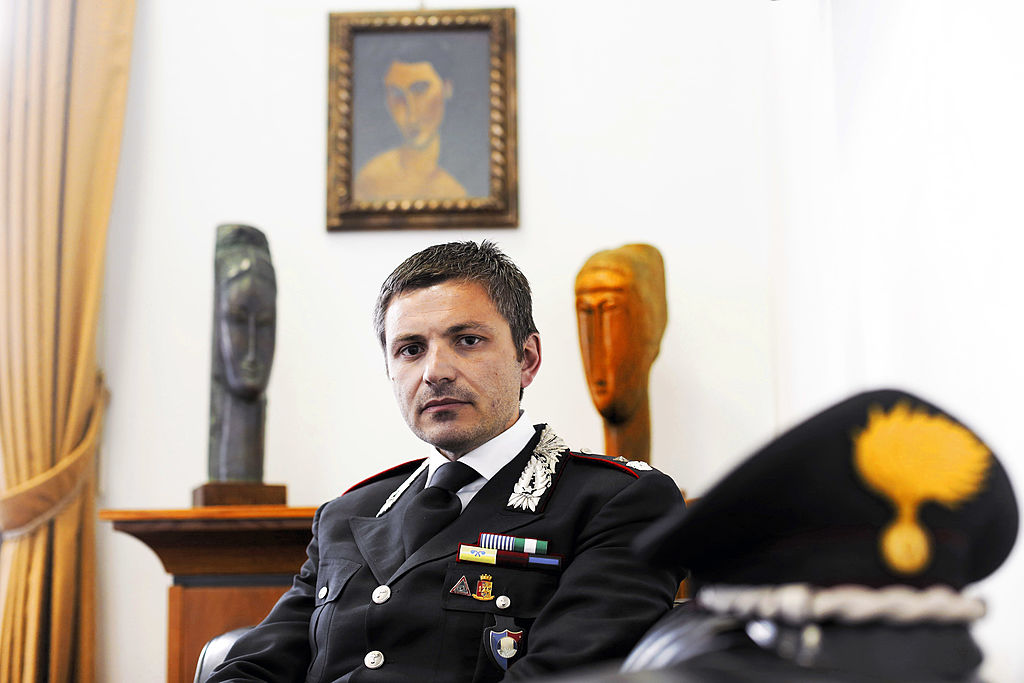
After two years of investigations, Italian police have identified three new suspects connected to a swath of fake Modigliani works that were controversially exhibited at a museum in Genoa in 2017, according to reports in Italian media.
At a press conference in Rome on Wednesday, March 13, the Carabinieri’s Lieutenant Colonel, Nicola Candido, announced the conclusion of the preliminary phase of the investigation and added three names to a list of alleged perpetrators: Piero Ottorino Martino Pedrazzini, a collector and owner of one of the alleged forgeries; Nicolò Sponzilli, a director of Mondo Mostre Skira, the company that organized the show; and Rosa Fasan, one of Skira’s employees.
Sponzilli and Fasan have been named in connection with a newly uncovered document sporting a false logo of the municipality of Genoa, according to the reports.
Three other suspects—Massimo Vitta Zelman, the president of Mondo Mostre Skira; Rudy Chiappini, the Genoa show’s curator; and Joseph Guttmann, a Hungarian-born US art dealer who loaned 11 of the contested works to the exhibition—were already under investigation in 2017.
This painting, supposedly by Amedeo Modigliani, was seized from the exhibition in Genoa and proven to be a fake. Courtesy of the Genova Palazzo Ducale.
Before the exhibition arrived to the Palazzo Ducale in Genoa in March 2017, it toured a few smaller venues without incident. An eagle-eyed art collector and critic, Carlo Pepi, tipped off the police after he suspected the works on show were not the real deal.
The police seized 21 paintings, 15 of which were attributed to Modigliani (others were supposedly by Moise Kisling). Art experts subsequently concluded that 20 of the works were forgeries, and the show was closed three days early. In January 2018, consumer advocates in Italy were demanding refunds for visitors who paid to see the exhibition.
Now that the pool of suspects has been confirmed, prosecutors in Italy will examine the evidence to determine whether there is enough to press charges, which could include fraud and receiving and circulating false works.
Next year will mark 100 years since the death of the celebrated 20th-century painter. Modigliani’s recognizable portraits, with their signature long necks, are among the most frequently faked blue-chip artworks, possibly given the artist’s track record at auction: one of his reclining nudes went for $170 million in 2015.